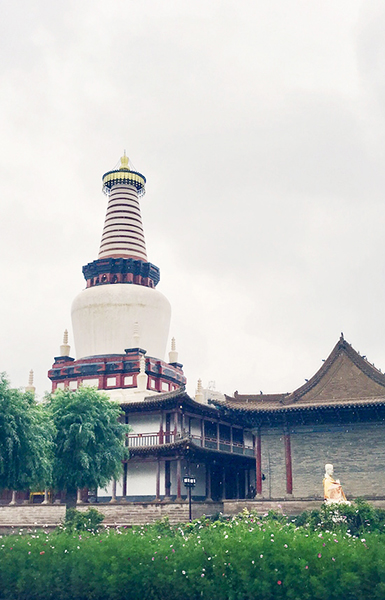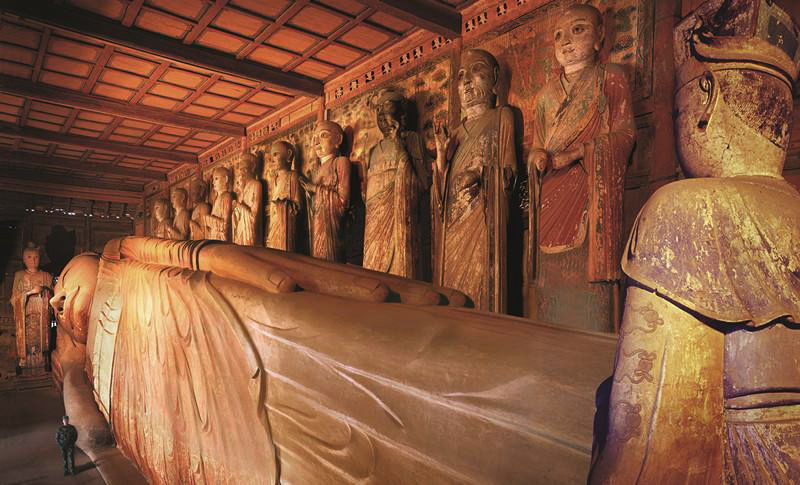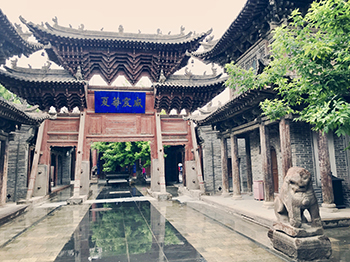
The city of Zhangye once served as a bustling trading hub along the ancient Silk Road and, as such, it was one of the first Chinese cities to be exposed to Buddhist influence. The Giant Buddha Temple stands as a testament to the profound impact that Buddhism had on this city. With a name like the Giant Buddha Temple, it shouldn’t be too hard to guess what this place is famous for! Originally built during the Western Xia Dynasty (1038-1227), the temple is home to the largest statue of the Reclining Buddha in China. The eponymous Giant Buddha statue is 33 metres (108 ft.) high, 49 metres (161 ft.) wide, and 24 metres (79 ft.) long. To put that into perspective, it is over five times the height of a giraffe and about as long as the average blue whale! The temple itself is also one of the largest remaining relics of the Western Xia Dynasty, a mysterious empire that was led by a Turkic people known as the Tanguts.
According to legend, a member of the imperial Tangut clan named Sineng decided to become a Buddhist monk and was traveling in the area surrounding Zhangye when he heard heavenly sounding music. Following the sound, he came to the foot of a mountain where a numinous light was shining. After digging at this luminous location, he unearthed a collection of Buddhist artefacts and among them was a statue of the reclining Buddha. Sineng interpreted this as a sign of divine approval and vowed to build a magnificent temple in honour of this sacred statue. Five years later, his wish came true when in 1103 the Western Xia Emperor Chongzong provided the funds necessary to begin building the temple on the grounds of a pre-existing temple, which had been known as the Jiaye Rulai Temple. This original statue is reputedly hidden deep within the belly of the much larger Reclining Buddha statue that takes pride of place within the temple today.
Nowadays, the temple complex is separated into three main areas: the Buddha Hall, where the giant Reclining Buddha is located; the Buddhist Art Exhibition Hall, where various Buddhist paintings and sculptures are exhibited; and the Sutras Exhibition Hall, where the original sutras collected within the temple are displayed. The giant statue of the Reclining Buddha was carved from clay that was plastered over a wooden frame before being painted and gold-plated, which gives it an uncannily lifelike appearance. Directly behind the main statue, there are statues of the 10 principal disciples of Shakyamuni Buddha. The sides of the hall are similarly home to statues of the 18 arhats, who are regarded as legendary guardians of Buddhism that supposedly possess supernatural powers. Alongside these vivid statues, the walls of the Buddha Hall are no less magnificent, as they have been covered with colourful murals that depict scenes from both the Mountains and Waters Sutra and the classical Chinese novel Journey to the West.
The Sutras Exhibition Hall, also known as the Hall of Scriptures, is currently home to over 6,000 volumes of ancient Buddhist sutras that have miraculously managed to survive within the temple. Some of these dusty tomes have actually been written in powdered silver or gold, making them exceedingly valuable and rare. After all, diamonds may be a girl’s best friend, but only the Diamond Sutra will help you achieve enlightenment!

Alongside the main temple halls, the temple complex itself is also home to two unique buildings: the Clay Pagoda and the Shanxi Guild. Originally, there were five pagodas in Zhangye known as the Five Element Pagodas, which were built in accordance with the traditional Chinese concept of the Five Elements. Now the 13-storey-high Clay Pagoda in the Giant Buddha Temple and the Wooden Pagoda in the Wooden Pagoda Temple are the only two that remain, making them important historical relics of the city’s ancient past.

Unlike the Clay Pagoda, the Shanxi Guild was technically never part of the original temple but has since been incorporated into the complex. The Shanxi Guild was founded in 1724 during the Qing Dynasty (1644-1912) as a place for traveling merchants from Shanxi province to network with one another and to feel more at home in this far flung city. These Shanxi merchants, more commonly known as the Jin Merchants, were astute businessmen who began by trading salt, which the imperial government permitted them to do so long as they provided food to imperial troops stationed within the frontier regions. This is why so many Shanxi merchants ended up in the remote western regions of China, such as Gansu province. Today, the Shanxi Guild still contains a well-preserved gate, theatre stage, audience tower, bell and drum tower, memorial archway, wing rooms, and hall. Wandering through these ancient buildings, you’ll effortlessly be transported back to what life was like for traveling merchants in this isolated oasis town.
Make your dream trip to Zhangye come true on our travel: Explore the Silk Road in China